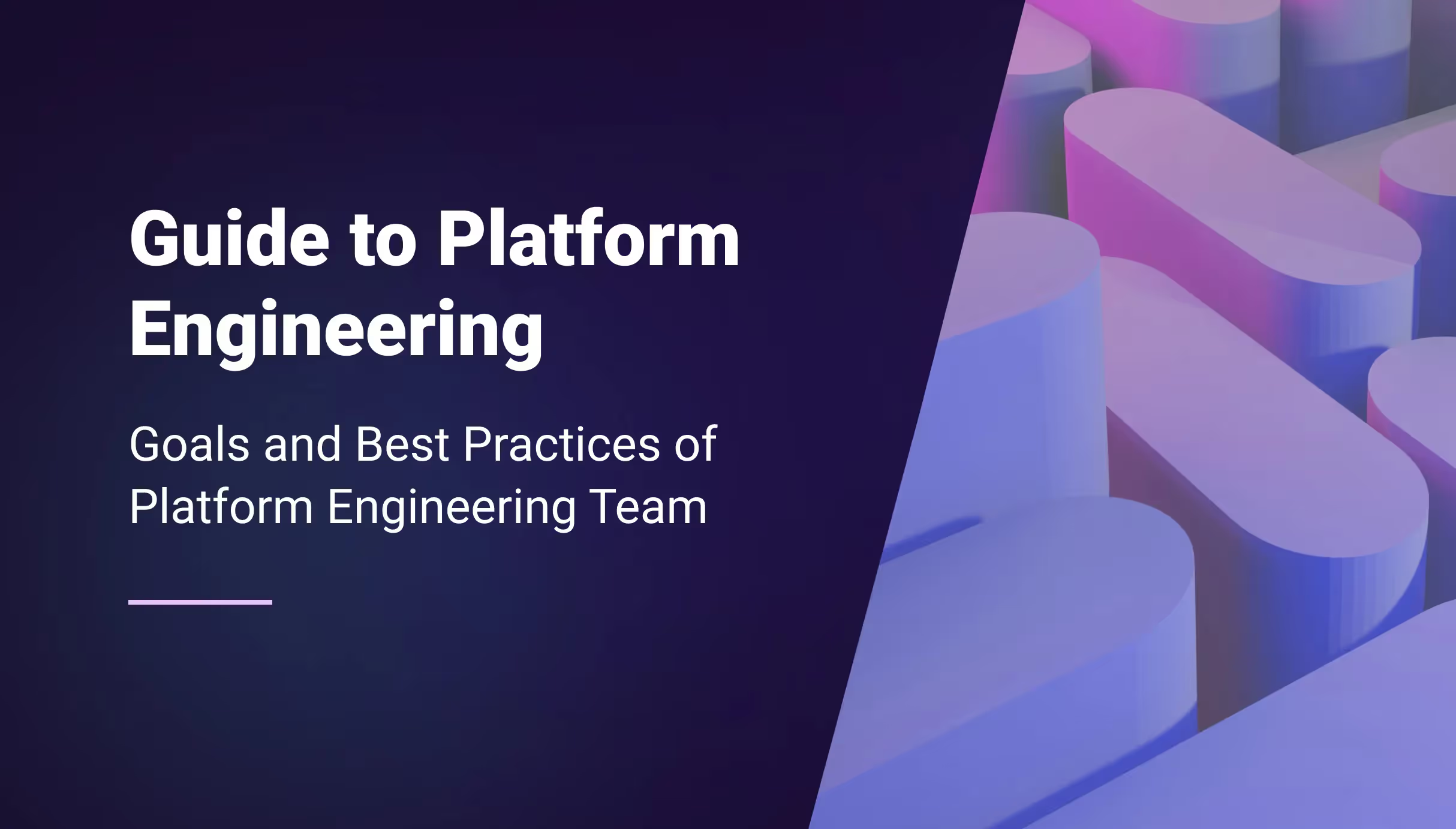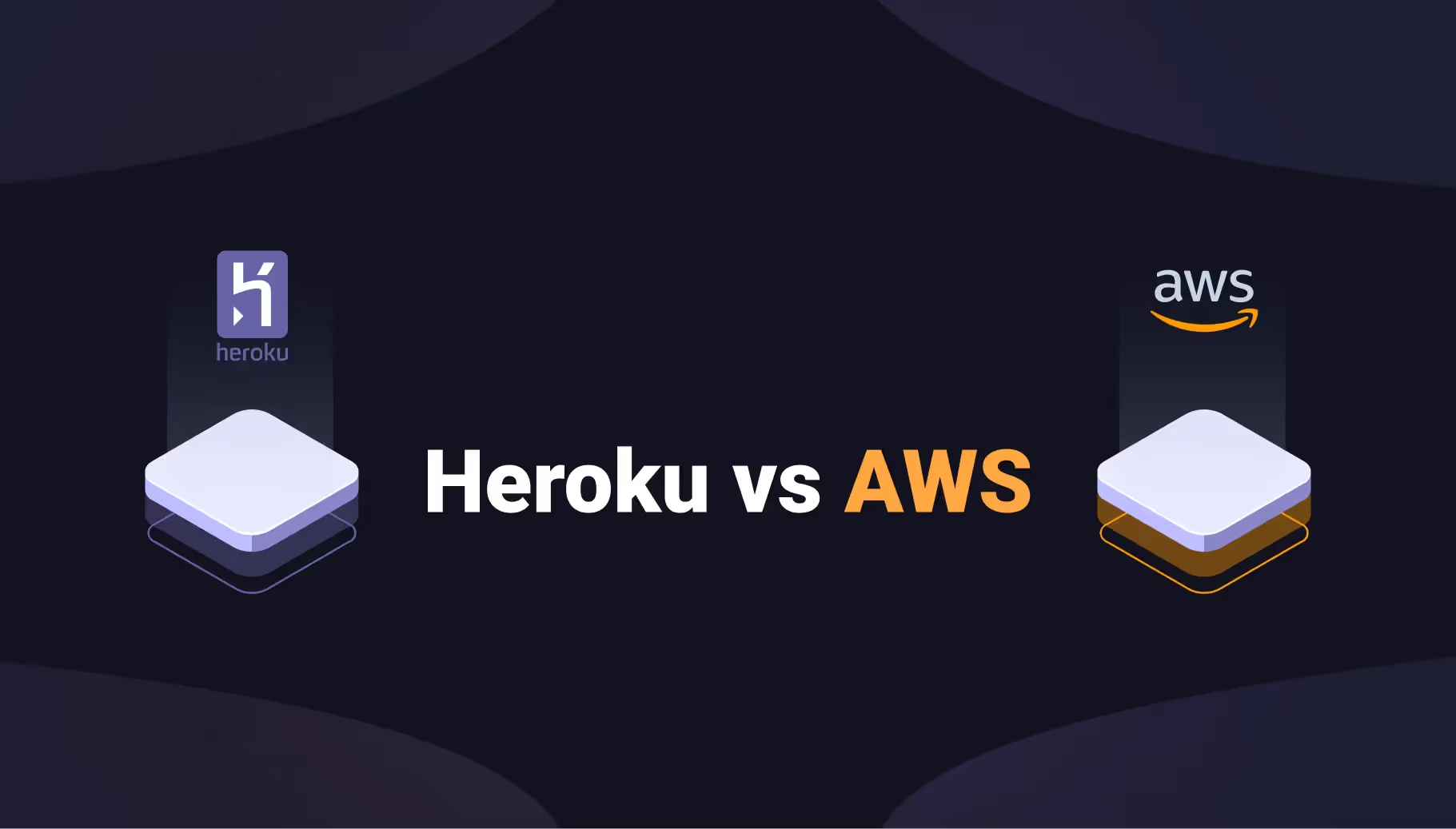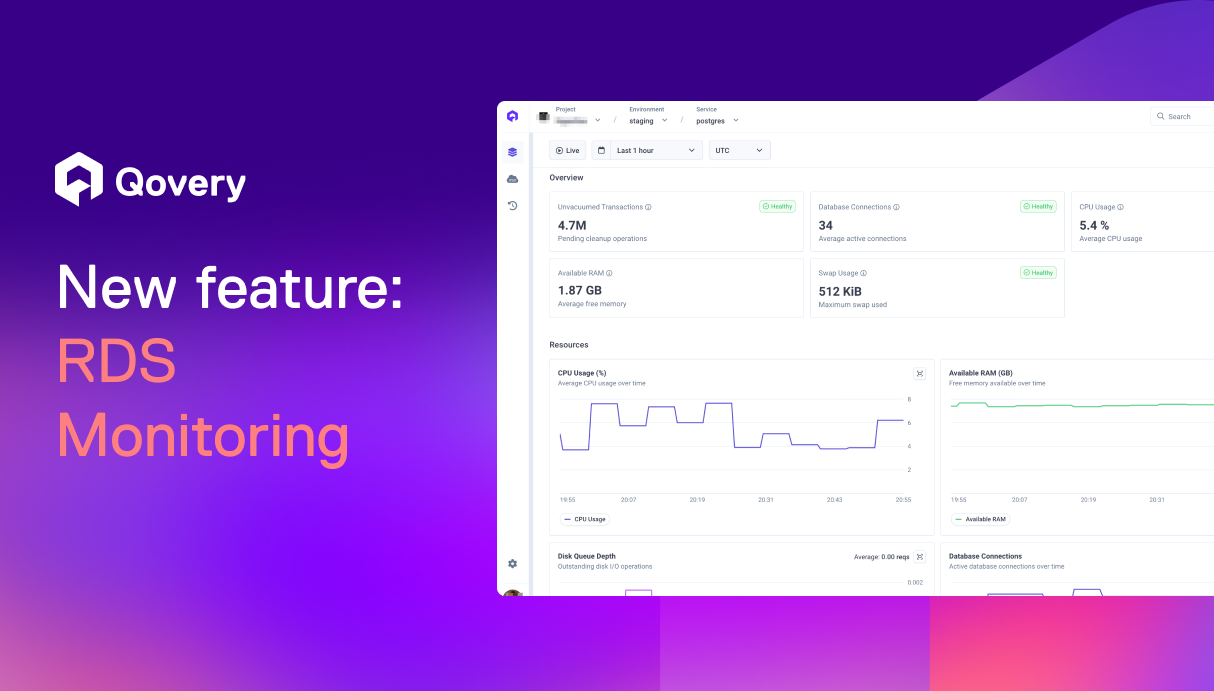

Guide to Platform Engineering: Goals and Best Practices of Platform Engineering Team



Goals of a Platform Engineering Team
When you start building a platform engineering team, the following goals must be met:
- Provide a stable and reliable foundation for application development: This includes ensuring that the underlying infrastructure and services are available, performant, and secure. Platform engineers work to identify and mitigate potential issues before they become problems, which helps to minimize downtime and ensure that applications are always available to users.
- Improve developer productivity and enable faster delivery of features: Platform engineers provide developers with easy-to-use, well-documented, and well-maintained tools and services. This helps developers to be more productive by reducing the time and effort required to complete tasks. Platform engineers also work to automate repetitive tasks, which further improves developer productivity.
- Enable scalability, performance, and security of applications: Platform engineers ensure that the underlying infrastructure and services can handle growing traffic and usage. This helps to ensure that applications remain responsive, even when traffic increases. Platform engineers also work to ensure that applications are secure by providing security features such as encryption and authentication.
- To provide centralized and consistent management of infrastructure and services: This can help to reduce operational complexity, increase efficiency, and improve communication and collaboration between different teams. With a centralized platform, it is easier to maintain and upgrade the infrastructure, which reduces the risk of downtime and improves overall performance.
"The ultimate goal should be to make it easier, faster, and safer to deliver new product features and product capabilities to customers” —Clément Hussenot-Desenonges, Platform Engineering Manager at ManoMano
When and How to Build an Internal Platform
Building an internal platform can be a powerful tool for improving developer productivity, enabling faster delivery of features, and ensuring scalability, performance, and security of applications. However, before embarking on this journey, it's important to consider certain factors such as business needs and goals, existing infrastructure and tools, and resources available (budget, team size, etc.).
A. Factors to Consider Before Building an Internal Platform
- Business Needs and Goals: Before building an internal platform, it's important to understand the specific business needs and goals that the platform will need to support. This includes identifying the types of applications and services that will run on the platform, as well as the expected traffic and usage patterns.
- Existing Infrastructure and Tools: It's also important to consider the existing infrastructure and tools that are currently in place. This includes evaluating existing solutions and determining whether they can be leveraged or integrated with the new platform.
- Resources Available: Building an internal platform requires significant resources, including a budget, team size, and expertise. It's important to consider the resources available and ensure that they are sufficient to support the development and maintenance of the platform.
B. Steps to Take When Building an Internal Platform
"A platform is more than just a set of tools or infrastructure; it is a product in and of itself” — Clément Hussenot-Desenonges, Platform Engineering Manager at ManoMano
- Define Requirements and Goals: The first step in building an internal platform is to clearly define the requirements and goals for the platform. This includes identifying the types of applications and services that will run on the platform, as well as the expected traffic and usage patterns.
- Evaluate Existing Solutions: Once the requirements and goals have been defined, it's important to evaluate existing solutions to determine whether they can be leveraged or integrated with the new platform. This includes evaluating both open-source and commercial solutions.
- Choose a Suitable Technology Stack: After evaluating existing solutions, it's important to choose a suitable technology stack for the platform. This includes selecting the appropriate languages, frameworks, and tools to use.
- Implement and Test the Platform: Once the technology stack has been chosen, the platform can be implemented and tested. This includes developing the platform, integrating it with existing systems, and testing it to ensure that it meets the requirements and goals defined in step one.
- Deploy and Maintain the Platform: Once the platform has been implemented and tested, it's important to deploy it and maintain it. This includes configuring and deploying the platform, monitoring it to ensure that it is running smoothly, and performing regular maintenance and upgrades to keep it up to date.
"Platform Team’s role is to make sure that the “operability state” of the app is kept in check and that all dependencies are up-to-date” —Victor Mignot, Head of SRE at Swile
C. Best Practices for Building and Maintaining an Internal Platform
- Emphasize Automation and Scalability: Automation is key to building and maintaining an internal platform. By automating repetitive tasks, organizations can reduce the risk of human error and improve the efficiency of the platform. Additionally, scalability is crucial for ensuring that the platform can handle growing traffic and usage. By emphasizing automation and scalability, organizations can ensure that their internal platforms are able to support the growth of their business.
- Prioritize Security and Compliance: Security and compliance are essential considerations when building and maintaining an internal platform. Organizations should prioritize security and compliance by implementing robust security measures, such as encryption and authentication, and by ensuring that their platform is compliant with relevant regulations and standards. By prioritizing security and compliance, organizations can protect their platform and the applications that run on it.
- Foster a Culture of Collaboration and Knowledge Sharing: Building and maintaining an internal platform requires a team effort. It's important to foster a culture of collaboration and knowledge sharing so that everyone on the team understands how to use the platform effectively. This includes encouraging communication and collaboration between different teams and departments and providing training and resources to help team members learn and grow. By fostering a culture of collaboration
Wrapping Up
Platform engineering plays a crucial role in creating and maintaining the infrastructure and services that support software applications. Building internal platforms can improve developer productivity and enable faster delivery of features while ensuring scalability, performance, and security. Factors such as business needs and resources available should be considered when deciding to build an internal platform. Best practices include automation, scalability, security, and fostering a culture of collaboration. The field of platform engineering is gaining more attention as organizations see its importance in modern software development. The future outlook for platform engineering is bright as more and more organizations recognize the importance of these practices in modern software development.
Great resources and feedback have been shared by Victor (Head of SRE at Swile) and Clément (Platform Engineering Manager at ManoMano) on how they set up their own internal developer platforms within their organizations. These resources can be found here and here and can serve as a valuable guide for organizations looking to build their own internal developer platforms.
How Qovery Can Help Platform Teams Build Solid Foundations
Qovery's platform provides a self-service infrastructure solution that allows developers to easily provision and manage the infrastructure and services they need to build and test their applications. The platform simplifies the process of setting up and configuring development environments, eliminating the need for manual setup and configuration. Additionally, Qovery's platform automates the provisioning and scaling of resources, making it easy to adjust the infrastructure to meet changing business needs. Furthermore, Qovery's solution offers centralized management of infrastructure and services that can help to reduce operational complexity and increase efficiency, giving the organization more time and resources to focus on developing and delivering features to their customers.
To experience first-hand the power of Qovery's self-service infrastructure, start a 14-day free trial.
Sign–up here - no credit card required!

Suggested articles
.webp)



.svg)
.svg)
.svg)









.webp)



